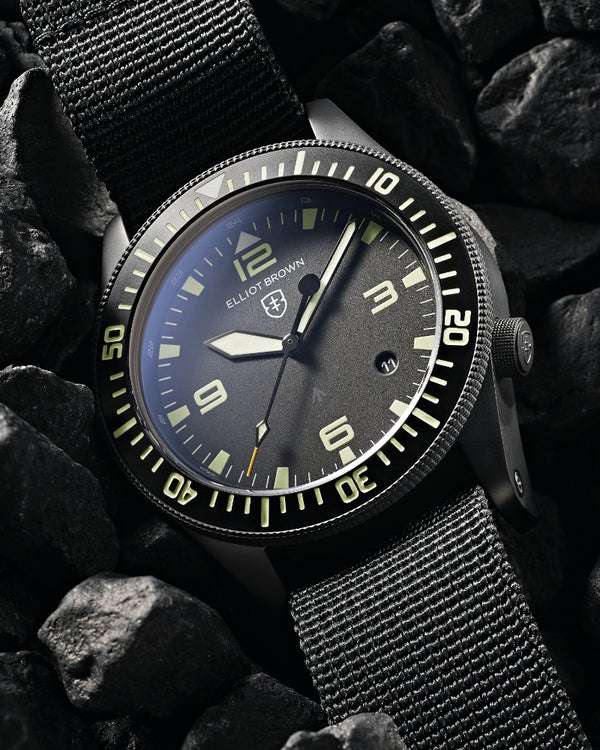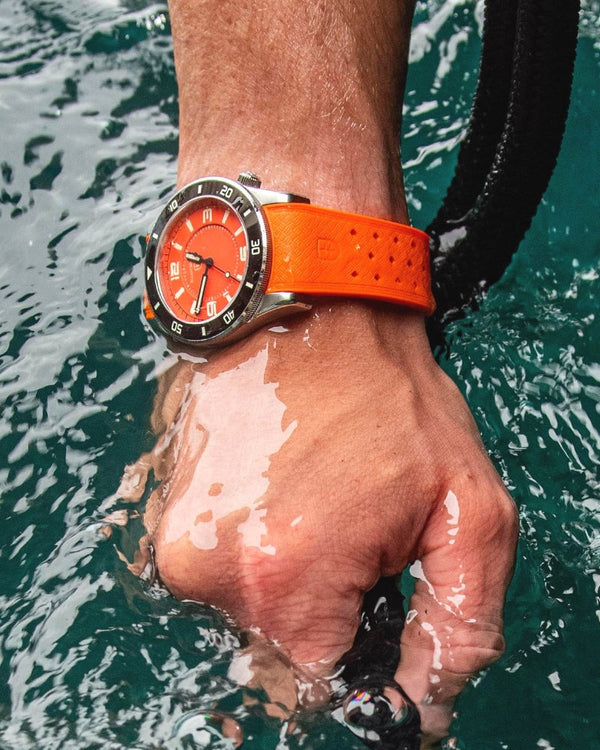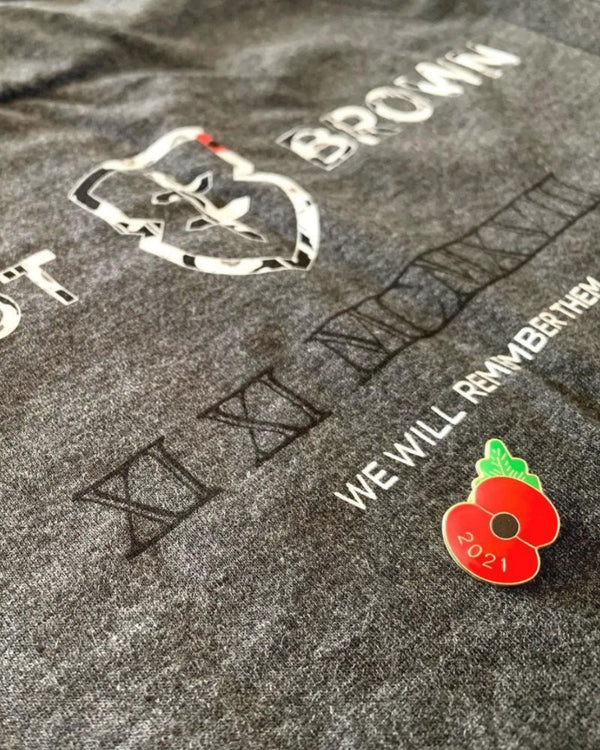The internal timing bezel on the Canford is a joy to use. It works in a similar way to the external bezels on our other watches, and can be used to time events lasting up sixty seconds when using the seconds hand, sixty minutes when referencing the minute hand or twelve hours using the hour hand.
Whilst every Canford has been tested in water at 200m, we don't recommend the Canford bezel for timing an oxygen assisted dive because it can be moved in both directions. However it's the office go-to when it comes to convenient, every-day timing duties.
It's beautifully simple to use via the high grip crown located at the 2 o'clock position on the side of the watch case. When the upper crown is turned it moves the inner bezel clockwise or counter-clockwise easily allowing the luminous 12h reference triangle to align with, say, the minutes to count up the elapsed time, or it can be set in advance of the current time to count downwards to an event.
Examples of these two different timing functions are explained below, both using the minutes hand.
1) To count up: Imagine you've parked a car in a car park and need to know how long you have left on the meter. At the time of parking, turn the crown so that the green reference triangle aligns with the minutes hand. The time the car is parked for can be noted as the minutes hand tracks around the inner bezel for up to sixty minutes.
2) To count down: The oven is up to temperature, a pizza goes in that requires 10 minutes cooking time. Set the inner bezel reference triangle marker ten minutes in advance of the time the pizza went into the oven and observe as the minutes hand counts down to zero on the bezel.
It's an elegantly simple timer and can be rotated both ways to aid the speed at which it can be set.
The crown/bezel operation is designed with an oily smooth damped action, designed to help prevent the bezel moving due to accidental knocks.
If you want to see how it works, here's a little time-lapse video we shot to show you.
















